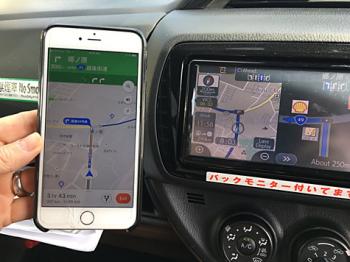Tips for driving in Japan
This item appears on page 16 of the December 2018 issue.
After returning from our second driving trip in Japan (July 2-12, 2018), my wife, Arnette, and I wanted to share some tips that could be useful to others who would like to see this beautiful country by car.
Driving in Japan is not difficult for several reasons.
• Highway signs are in both Japanese AND English, and routes are well marked.
• We found the locals to be very helpful when we asked for assistance.
• Nearly all the rental cars have GPS, available in English. However, instead of addresses, phone numbers must be used; therefore, you'll need to have the phone number of the place or hotel you're trying to find.
• When the phone number wasn't available, Arnette sometimes put the name of the place we wanted to get to into Google Maps on our iPhone, and that GPS directed us properly.
We compared the car's GPS routes to those of Google Maps. Though we would have ended up in the same place either way each time, the two did not always agree, as you can see in the photo, where Google Maps was pointing us to the right and the car's GPS was leading us to the left. We found that the Google GPS took the shorter route, sometimes even telling us that.
In the above case, our arrival time on Google was 11:46 a.m. and on the car's GPS, 11:58 — not much difference, but one time there was a half-hour difference.
• Toll roads can save a great deal of time, but the cost can be high. For example, driving for three hours on a toll road can cost $40-$50.
The time a toll road saves may be useful, though. One area we drove through in northern Honshu was littered with hills, and the drive through that area would have taken much longer. However, the countryside can be dramatically beautiful, so a slow go may be more enjoyable.
• Traffic in the city of Tokyo was not really an issue. However, trying to drive AND watch or listen to the GPS by yourself could become an issue. (Arnette is a master with GPS and did the navigating. Still, dropping the car off took a bit of around-the-block effort.)
• Filling up a rental BEFORE dropping it off saves a lot of money. Google Maps (or AroundMe or a similar app) can help locate gas stations. Gassing up is an experience, as the nozzle drops from the ceiling upon pushing a button.
• Research the car you'd like to rent (we get the smallest) while still at home and reserve it ahead of time. Expect to pay about $100 per day or so. (My insurance was covered by the credit card that I used to pay for the rental.)
For the convenience of seeing so much more, renting a car was well worth it. On this trip, we ended a cruise from Alaska on Hokkaido, walked two blocks to get the car, drove for six days, dropped the car off in another city and then took a shinkansen (bullet train) to Honshu, where we picked up another car.
We rented our cars from Hertz, since they had locations that fit our itinerary, although we've found that any American rental company can be used in Japan. Local rental agencies work too, as long as they provide a drop-off spot that fits your itinerary. If you're going to rent and return the car at the same place, any company would be acceptable.
Japan has many fascinating places that you'll be able to see only through driving. No bus tour can compare with the flexibility a car offers. Also, hotels are easy to book while traveling, through either TripAdvisor.com or Hotels.com.
JOE WHITEHOUSE
Oakland, CA

